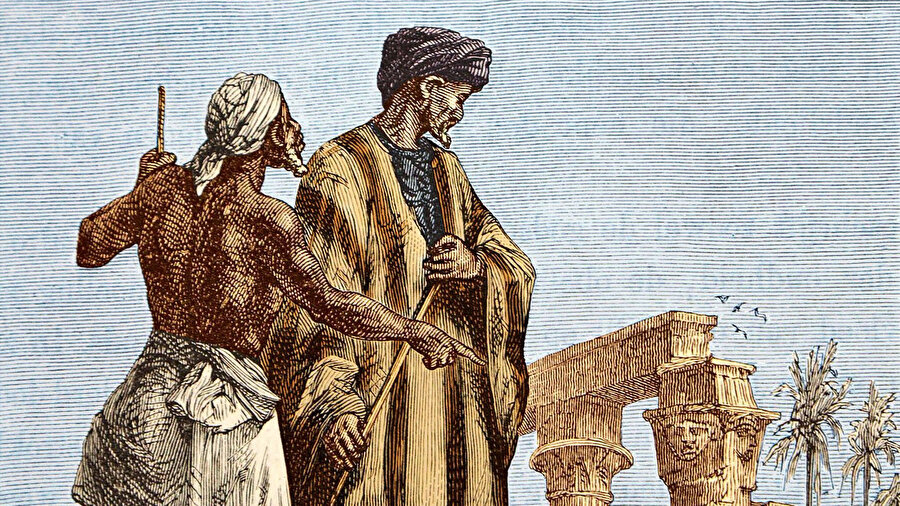He traveled the known world step by step: Who is Ibn Battuta?
In his travel book, Ibn Battuta, who is known as the greatest traveler, gave detailed information about the people living in the geographies he visited, their daily lives, clothes, and customs.

Stepping into almost every part of the known world and observing the differences in Muslim geography, Ibn Battuta returned to his hometown in Morocco after 29 years. In his travel book, Ibn Battuta gave detailed information about the people living in the geographies he visited, their daily lives, clothes, and customs.
When Ibn Battuta left his village in Tangier in 1304, this journey, which started with the intention of pilgrimage, turned into a magnificent journey without end.
Abu Abdullah Muhammad ibn Battutah (24 February 1304 – 1368/1369), commonly known as Ibn Battuta, was a Berber Maghrebi scholar and explorer who traveled extensively in the lands of Afro-Eurasia, largely in the Muslim world. He traveled more than any other explorer in pre-modern history, totaling around 117,000 km (73,000 mi), surpassing Zheng He with about 50,000 km (31,000 mi) and Marco Polo with 24,000 km (15,000 mi).
After leaving Tangier, he stayed for a short time in Egypt, where he went to Mecca via Syria and made his first pilgrimage. Ibn Battuta, who went to Iran from here, returned to the Hejaz region via Baghdad and made a pilgrimage. He crossed the East African coast from the Hejaz by ship and visited regions such as Somalia, Kenya, and Tanzania. When he left the African coasts, he saw Yemen and Oman and passed to the parts of the Persian Gulf on the Iranian side. After returning to Mecca and performing the pilgrimage again, Ibn Battuta set out for Jerusalem.
He visited many cities of Anatolia such as Antalya, Isparta, Konya, Erzurum, and Bursa, his next stop after Jerusalem, and turned his route to today's Kazan city to see the big Turkish city Bulgar. Ibn Battuta, who went to Constantinople via Bulgar, returned from there to the Turkish regions called Deşt-i Kipchak, which are north of the Caspian Sea. Ibn Battuta, who reached Delhi by passing Khwarezm and Samarkand, served as a judge there for a long time.
Burning with the desire to travel again, he headed towards the Maldives. After 9 months of short Maldivian residence, Ibn Battuta set foot in Seyhan and went to Bangladesh from there. After a short trip in eastern China, he returned to the West, to Baghdad. Arriving in Mecca via Egypt to make his last pilgrimage, Ibn Battuta came back to his hometown after fulfilling his duty. However, this was not a definite return and he set out with the desire to see Andalusia. After his trip to Granada, he headed to Inner Africa.
His great journey, which started in Morocco, ended with his return to Morocco after about 30 years. During this period, Ibn Battuta traveled to more than 40 countries and held various positions in the cities he visited. He was loved by the people wherever he went because of his humble nature and life, he took on diplomatic duties because of the languages he knew, and received approvals from the scholars he met. He died in Morocco in 1368, and the memories of all these geographies were in his memory.
